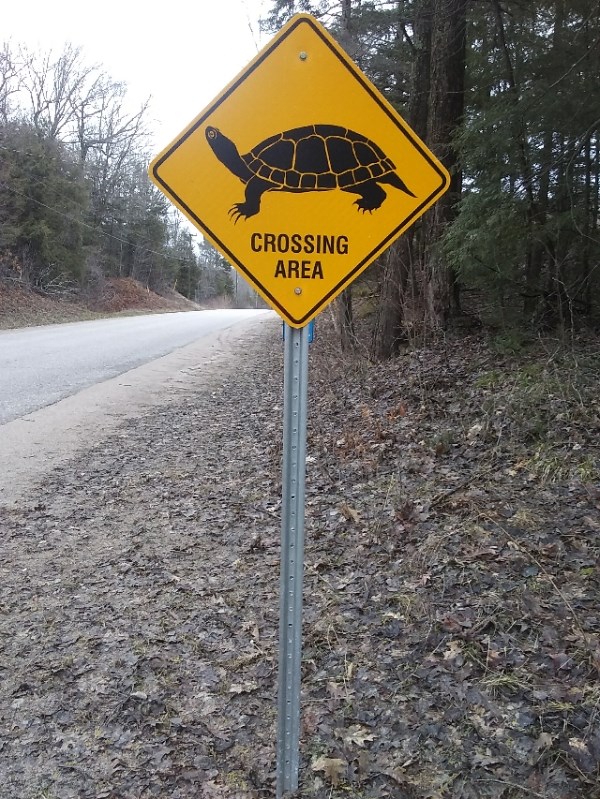Tiny Township and Awenda Provincial Park are working to support turtle conservation by placing “turtle crossing” signs in critical habitat areas.
Two signs have been placed on Allport Road while a second set bookends a section of Champlain Road between Seneca and Chippewa Crescents.
Tiny Township is home to five of Ontario’s eight turtle species, all of which are classified as species at risk in Canada and protected under the Species at Risk Act.
Urbanization and the destruction of wetlands pose the largest threat for turtle species. Moving between different habitat areas, especially during the May-June nesting season, is particularly risky for slow-moving turtles.
Road mortality has a large impact on turtle populations. Some turtle species do not reach maturity until age 25. With annual egg predation rates by raccoons, skunks and fox approaching 99 percent, the loss of any single adult can be a significant threat to local populations.
The prime time for turtle crossing is from May to September.
Area naturalist Bob Bowles said in June, female turtles will come out of wetlands and cross busy roads to lay their eggs on roadsides that are well drained and in open sunshine.
“These areas are the best locations for egg incubation, but many turtles get run over by passing vehicles at this time.”
A female snapping turtle can live for 100 years, but they don’t breed and lay eggs until they are between 17 and 20 years old, according to Bowles.
“She may come out of a wetland for the first time to lay eggs ... and, not knowing about the dangers of a highway, get killed by a passing vehicle,” he said. “She would have had over 90 years of laying eggs and the potential to add young turtles to the population, but now she is dead.”
It’s critical to take steps to protect turtles because their numbers are “falling quickly,” Bowles said.
Twenty years ago, two of the eight species native to the area were endangered. Now, three species are listed as endangered, and all eight are on the list of species at risk.
“I want everybody to think about that,” said Bowles, who founded Kids for Turtles Envrionmental Education in 2006 and subsequently started purchasing and installing “turtle crossing” signs.
What you can do to help turtles:
• Respect speed limits, drive slowly and give keep an eye out for turtles on the road. If you see a turtle, slow down and give it a wide berth when passing.
• If it is safe to do so, pull over and help the turtle cross the road. Always move a turtle in the direction it was going – otherwise it will keep trying to cross the street. Snapping Turtles should be approached with caution and ushered across the road using a stick or on a car mat (see here for safe techniques to help Snapping Turtles cross a road). Other turtles can be picked up by the sides and carried across the street.
• Record turtle sightings with a photo and submit them to the free app iNaturalist or send them to Awenda's Discovery Department at [email protected].
-with files from Nathan Taylor
